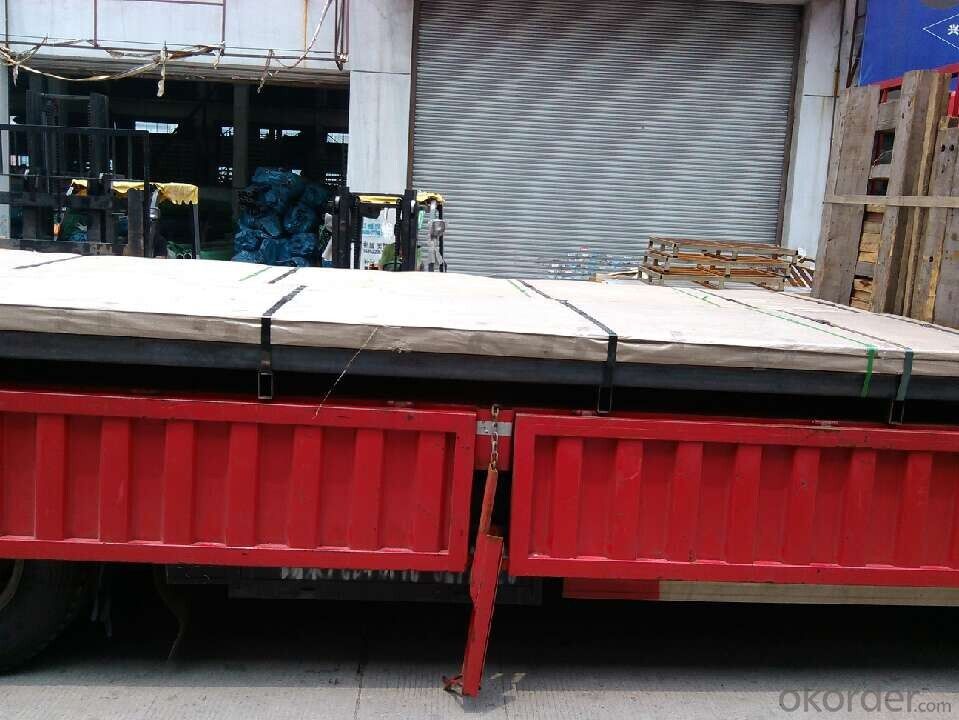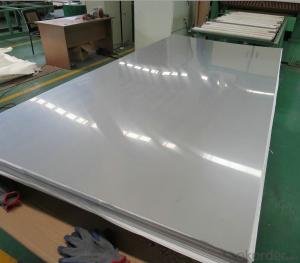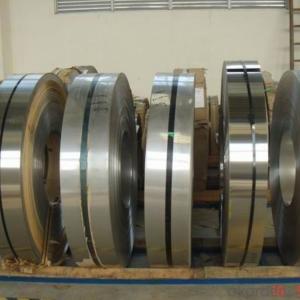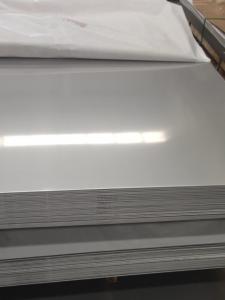TISCO hot rolled stainless steel sheet no.1 310s
- Loading Port:
- Shanghai
- Payment Terms:
- TT OR LC
- Min Order Qty:
- 4 m.t
- Supply Capability:
- 25000 m.t/month
OKorder Service Pledge
OKorder Financial Service
You Might Also Like
Specification
1. Specifications about stainless steel sheet no.1 310s
Commodity | TISCO hot rolled stainless steel sheet no.1 310s |
Grade | 201,202,304,304L,316,316L,310S,309S,321,301,310,410,420,430,904L |
Brand | TISCO ,BAOSTEEL,POSCO,JISCO,LISCO |
Certification | SGS,BV,IQI,TUV,ISO,etc |
Thickness | 0.2mm-150mm |
Width | 1000,1219,1250,1500mm, or as your requirements |
Length | 2000,2438,2500,3000,6000mm, or as your requirements |
Surface | No.1, 2B, BA, 8K Mirror, Hairline,satin, Embossed,brush,No.4,HL,matt,pvc film,laser film. |
Standard | ASTM,AISI,SUS,JIS,EN,DIN,GB,etc |
Delivery time | 5-7 days after confirming the order |
MOQ | 1 Ton |
Advantages | Showing the splendor of your quality, wearresistant as well , strong corrosion resistance and decorative effect, durable and beautiful in good taste. |
2. Chemical Composition about stainless steel sheet no.1 310s

3. Production Flow about stainless steel sheet no.1 310s
Raw materials are sending to hot rolling units for rolling into different sizes
Hot rolled material is annealing in cold; rolled annealing furnace and pickling in acid.
All mill rolls are grinded on precision grinding machine with proper chamfering after first shiftoperation.
All sheets are pickled in different tanks and dried on brush roll machine before dispatched.
These sheets are again annealing and are sent to straighten machine for straightening.
Inspections are done at various stages. Keep proper control overall internal process via rolling,annealin and pickling by our experienced staff
4.Products photos


Packaging & Shipping
5.Package-- stainless steel sheet no.1 310s


Our Services
7.Manufacturing Process of Stainless Steel Sheet/Plate:
Raw materials are sending to hot rolling units for rolling into different sizes.
→Hot rolled material is annealing in cold rolled annealing furnace and pickling in acid.
→All mill rolls are grinded on precision grinding machine with proper chamfering after first shift operation.
→All sheets are pickled in different tanks and dried on brush roll machine before dispatched.
→These sheets are again annealing and are sent to straighten machine for straightening.
→Inspections are done at various stages. Keep proper control overall internal process via rolling, annealing and pickling by our experienced staff.
Cold rolled,annealing,pickled,slited,straightened,for stainless steel sheet no.1 310s raw material
Stainless steel maintenance:
(1) Regular cleaning and maintenance
(2) Pay attention to prevent the occurrence of the phenomenon of surface scratches
(3) Use soap, weak detergent or warm water to remove surface dust, dirt
(4) In addition to the surface of the binder with alcohol or an organic solvent (ether, benzene)
(5) Use neutral detergent or ammonia solution in addition to surface oil
(6) With 10% nitric acid or abrasive detergent in addition to the surface of the embroider caused by the dirt.
- Q: What are the benefits of using etched stainless steel sheets in signage?
- Using etched stainless steel sheets in signage comes with numerous advantages. Firstly, these sheets are incredibly durable and long-lasting due to stainless steel's resistance to corrosion, rust, and fading. This makes them perfect for outdoor signage that is exposed to harsh weather conditions. Secondly, etched stainless steel sheets provide a sleek and professional look. Through the process of etching, intricate designs, logos, and text can be permanently engraved onto the surface of the stainless steel. This results in a visually appealing finish that adds sophistication to any signage. Additionally, etched stainless steel sheets are highly customizable, allowing them to meet specific design requirements. This versatility makes them suitable for a wide range of signage applications such as architectural signage, company logos, directional signs, or wayfinding systems. They can be tailored to match any style or branding. Moreover, stainless steel is easy to clean and maintain. Simply wiping it down with a cloth or using mild soap and water will keep the signage in pristine condition for an extended period. This low maintenance requirement is particularly advantageous for outdoor signage that may require regular cleaning. Lastly, etched stainless steel sheets offer excellent visibility. By filling the engraved designs on the stainless steel surface with paint or other materials, the signage becomes highly visible even from a distance or in low light conditions. This enhanced visibility ensures that the intended message or information is effectively communicated to the target audience. In conclusion, the use of etched stainless steel sheets in signage provides durability, a professional appearance, customization options, easy maintenance, and excellent visibility. These advantages have made etched stainless steel sheets a popular choice for signage applications across various industries.
- Q: What's the difference between 304 stainless steel and 314?
- 304 stainless steel is a universal stainless steel material: 314 stainless steel; high temperature oxidation resistance and strong mechanical properties; high heat resistant stainless steel, and 314 austenitic stainless steel, high temperature oxidation resistance and creep resistance. 314 stainless steel used in furnace tube difference
- Q: What is the maximum thickness of a stainless steel sheet?
- The specific grade or type of stainless steel being used can cause the maximum thickness of a stainless steel sheet to vary. Typically, stainless steel sheets can have a thickness ranging from 0.4 millimeters (0.0157 inches) to 100 millimeters (3.937 inches) or more. However, it's important to note that the availability of thicker sheets may be limited and can differ depending on the supplier or manufacturer. Furthermore, the composition and intended use of certain stainless steel alloys may impose different thickness limits. Therefore, it is always recommended to consult with a supplier or refer to the specifications provided by the manufacturer to determine the maximum thickness of the specific stainless steel sheet you require.
- Q: Are stainless steel sheets available in different finishes?
- Yes, stainless steel sheets are available in different finishes. Stainless steel is a versatile material that can be finished in various ways to achieve different appearances and textures. Some common finishes include brushed, mirror, satin, and textured finishes. Each finish has its unique aesthetic appeal and can be chosen based on the desired look and application requirements. The choice of finish can also impact the stainless steel sheets' resistance to corrosion, staining, and scratching. Therefore, manufacturers offer a variety of finishes to cater to different customer preferences and specific project needs.
- Q: Can stainless steel sheets be used for marine propellers?
- Yes, stainless steel sheets can be used for marine propellers. Stainless steel is a popular choice for marine propellers due to its excellent corrosion resistance properties. The high levels of chromium in stainless steel make it resistant to rust and other forms of corrosion, even in saltwater environments. Additionally, stainless steel offers good strength and durability, making it suitable for withstanding the harsh conditions of marine environments. Stainless steel propellers are often preferred for boats and ships as they require less maintenance and have a longer lifespan compared to other materials. However, it is important to choose the appropriate grade of stainless steel for marine propellers to ensure optimal performance and longevity.
- Q: How do you form stainless steel sheets into different shapes?
- Stainless steel sheets can be formed into different shapes through various processes such as bending, rolling, and welding. The specific method used depends on the desired shape and the thickness of the stainless steel sheet. Bending is a common method used to form stainless steel sheets into shapes such as cylinders or boxes. This process involves clamping the sheet between a punch and a die and applying force to create the desired bend. The angle and radius of the bend can be controlled by adjusting the pressure and the distance between the punch and die. Rolling is another technique employed to form stainless steel sheets into curved or cylindrical shapes. This process involves passing the sheet through a set of rollers, which gradually bend the material into the desired shape. The diameter and curvature of the final shape can be adjusted by changing the spacing and alignment of the rollers. For more complex shapes, welding is often used in conjunction with bending or rolling. In this process, multiple stainless steel sheets are joined together using heat and pressure to create the desired form. This allows for the creation of intricate shapes, such as cones or irregular geometries. In addition to these methods, specialized equipment such as hydraulic presses or hydroforming can also be utilized to form stainless steel sheets into different shapes. These techniques involve applying high pressure or fluid pressure to the sheet, resulting in deformation and the desired shape. It is important to note that forming stainless steel sheets requires skilled operators and precise machinery to ensure accuracy and quality. Additionally, the properties of the stainless steel, such as its thickness and composition, can also influence the feasibility and success of the forming process.
- Q: Can stainless steel sheets be used for cryogenic applications?
- Indeed, cryogenic applications can utilize stainless steel sheets. Stainless steel boasts remarkable mechanical properties, corrosion resistance, and low thermal conductivity, rendering it fitting for cryogenic settings. It endures frigid temperatures without succumbing to brittleness or weakening. Frequently, stainless steel sheets find employment in cryogenic applications like storage tanks, piping systems, and cryogenic equipment. Nevertheless, it is crucial to select the proper grade of stainless steel, specifically intended for cryogenic applications, to guarantee utmost performance and durability.
- Q: What are the benefits of using stainless steel sheets?
- There are several benefits of using stainless steel sheets. Firstly, stainless steel is highly durable and resistant to corrosion, making it suitable for various applications in different environments. Secondly, stainless steel is easy to clean and maintain, making it a hygienic choice for industries such as food processing and medical facilities. Additionally, stainless steel sheets have a sleek and modern appearance, making them aesthetically pleasing for architectural and design purposes. Lastly, stainless steel is recyclable and environmentally friendly, making it a sustainable choice.
- Q: What is the fire resistance rating of stainless steel sheets?
- Stainless steel sheets lack an inherent fire resistance rating as they are not naturally fire resistant materials. Nevertheless, stainless steel can demonstrate commendable fire resistance attributes due to its high melting point and low thermal conductivity. Consequently, stainless steel sheets are less prone to melting or transferring heat during a fire, thus impeding the spread of flames. Furthermore, stainless steel possesses corrosion resistance, which further bolsters its performance in fire scenarios. However, it should be emphasized that the fire resistance of a structure or system hinges on a combination of diverse factors, encompassing the comprehensive design, construction, and utilization of fire-resistant materials. Consequently, the fire resistance rating of stainless steel sheets may fluctuate depending on the specific application and the overarching fire protection measures implemented.
- Q: Are stainless steel sheets easy to install?
- Yes, stainless steel sheets are relatively easy to install. They can be easily cut to size and can be installed using various methods such as adhesive, screws, or welding, depending on the specific application. Additionally, stainless steel sheets are lightweight and flexible, making them easier to handle and install compared to other materials.
Send your message to us
TISCO hot rolled stainless steel sheet no.1 310s
- Loading Port:
- Shanghai
- Payment Terms:
- TT OR LC
- Min Order Qty:
- 4 m.t
- Supply Capability:
- 25000 m.t/month
OKorder Service Pledge
OKorder Financial Service
Similar products
Hot products
Hot Searches
Related keywords


























